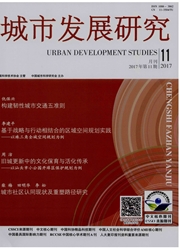

 中文摘要:
中文摘要:
“能源景观”是综合考虑能源规划与空间规划的研究理念,主旨是量化可再生能源载体时间与空间分布规律,通过空间规划及调控政策、激励机制、财政支持等手段对可再生能源生产用地的空间与时间分布进行优化。运用“能源景观”方法体系来从空间规划层面对能源规划加以引导与控制,通过生产潜能分析、能源供需分析、时空变异预测构建基于能源规划和空间规划交叉研究的空间规划改进策略,能够改变黑龙江生物质能丰富但利用效率较低、资源浪费严重的现状,优化生物质能消费结构,间接减少不可再生能源消耗基于生产潜能分析确立黑龙江生物质能发展定位,在德国、奥地利案例经验基础上建立居民定居点与运输成本关系模型,构建生物质能生产用地布局模式。
 英文摘要:
英文摘要:
“Energy landscape” is a comprehensive concept considering energy planning and spatial planning, and its keynote is to quantize law of temporal and spatial distribution of renewable energy carrier. Applying spatial planning, regulation policy, incentive mechanism and financial support can optimize temporal and spatial distribution of renewable energy production land, Heilongjiang province has abundant biomass energy resources, but resource waste is severe for low using efficiency. Using “energy landscape” methods to guide and control energy planning from the aspect of space planning can optimize the biomass energy consumption structure and reduce non-renewable energy consumption indirectly and improve strategy of space planning on the basis of cross research of energy planning and spatial planning through the analysis of biomass production potential, energy supply & demand and temporal & spatial variation forecast. Biomass energy development orientation of Heilongjiang is established by analyzing biomass energy production potential. Model of relation between settlements and transporlation cost created on the basis of Germany and Austria's case experience can develop planning pattern of biomass energy prodnction land.
 同期刊论文项目
同期刊论文项目
 同项目期刊论文
同项目期刊论文
 期刊信息
期刊信息
